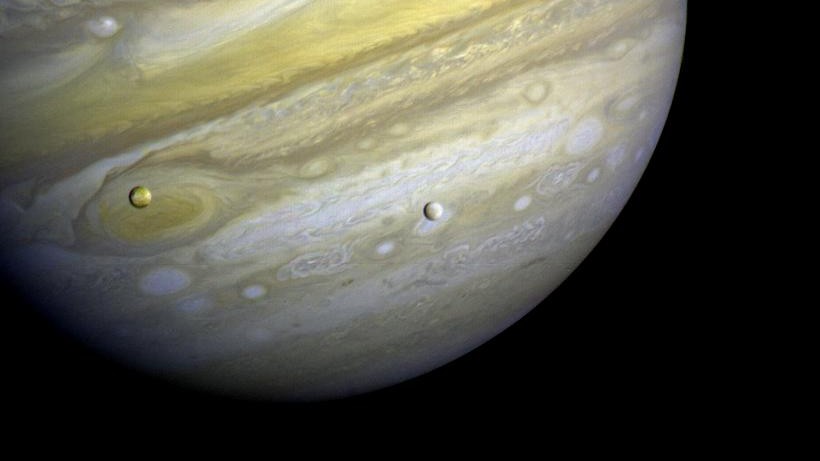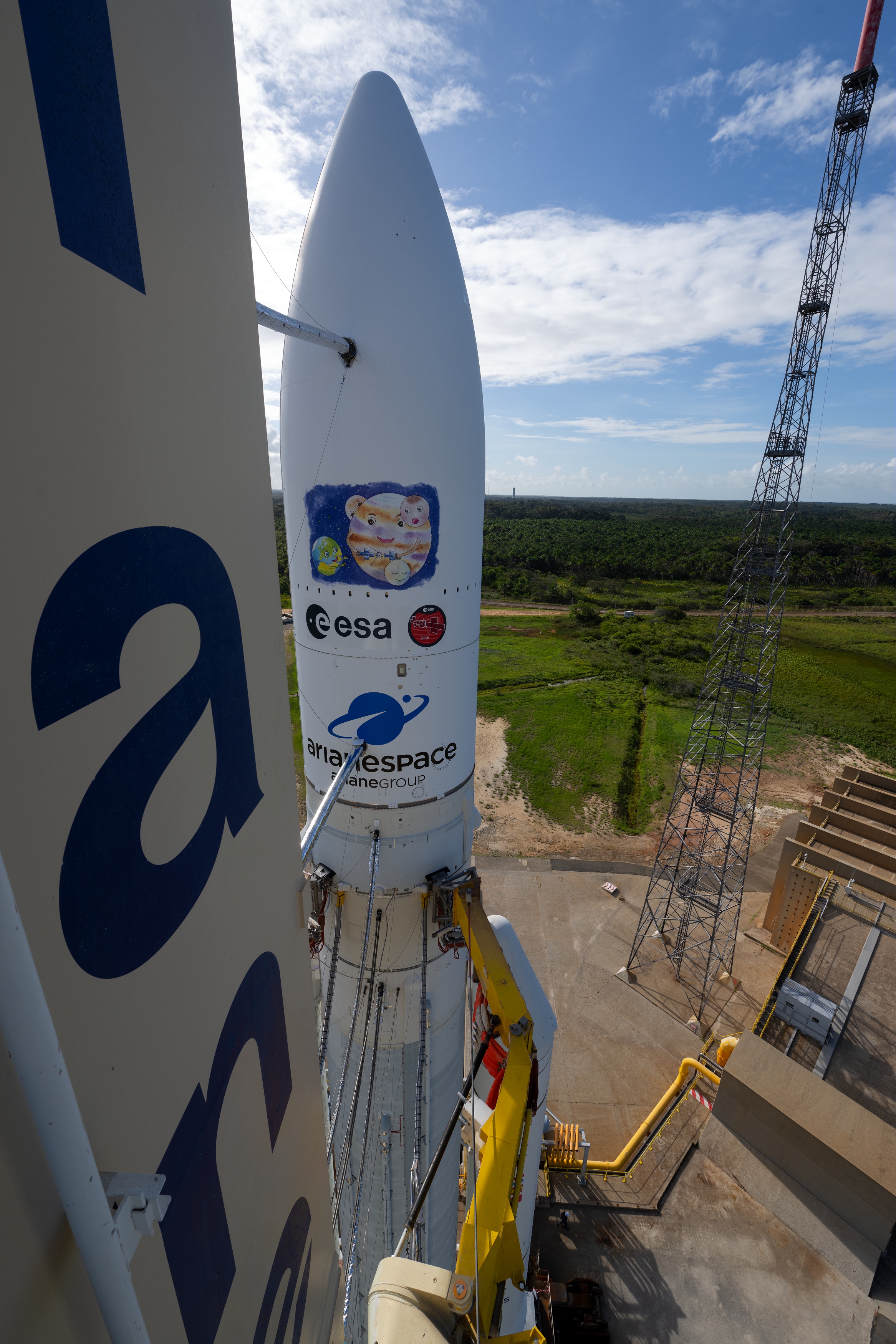
On Thursday (April 13), the European Space Agency (ESA) is launching an exciting new mission to study whether the moons of Jupiter have the potential to host alien life: the Jupiter Icy Moons Explorer, also known as JUICE. And you can watch the launch happen, thanks to ESA's live coverage, which is scheduled to start at 7:45 a.m. EDT (1145 GMT), with the launch set to happen at 8:15 a.m. EDT (1215 GMT).
JUICE is a satellite that will study three of Jupiter's 92 known moons: Ganymede, Callisto and Europa. Each of these worlds has an ocean of water hidden underneath an icy shell. These subsurface waters are an important target for astronomers searching for life beyond Earth, since they have the potential to host life. According to ESA, JUICE will investigate this key question: "Is the origin of life unique to our planet, or could it occur elsewhere in our solar system — or beyond?”
This mission will be the first to orbit a moon in the outer solar system, since it will spend time orbiting Ganymede. Jupiter's four largest moons are known as the Galilean moons, as they were discovered by Galileo Galilei; of these, Ganymede is the largest, and the only moon in the solar system to have a magnetic field.

During its time near Jupiter, JUICE will also make observations of the gas giant itself, helping astronomers understand how gas giants form and revealing unprecedented detail of what their environments are like. Understanding gas giants like Jupiter is important for not only our own solar system but also for observations of exoplanets, since we can't study them up close.
JUICE will spend about eight years traveling to Jupiter, and its long journey starts with this launch. The satellite is currently perched atop an Ariane 5 rocket (the same kind that launched the James Webb Space Telescope) at Europe's Spaceport in Kourou, French Guiana.
A few crucial milestones will follow shortly after launch. The satellite's separation from the rocket is scheduled to occur at 8:42 a.m. EDT (1242 GMT), the first signal from JUICE should arrive around 8:51 a.m. EDT (1251 GMT), and the satellite's solar panel array will deploy around 9:55 a.m. EDT (1355 GMT).
You can watch all of this, plus a postlaunch news conference, on ESA Web TV or ESA's YouTube stream.
After launch, the satellite will continue unfurling, deploying its antennae a few days to weeks later. You can keep tabs on JUICE in the coming years with ESA's tracker for the probe, as we all await its arrival at Jupiter in July 2031.







